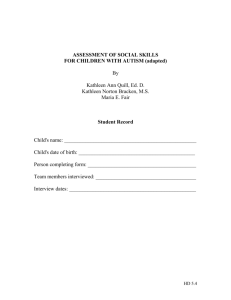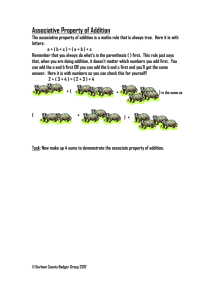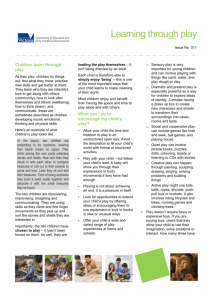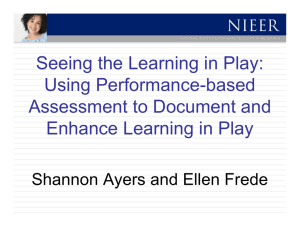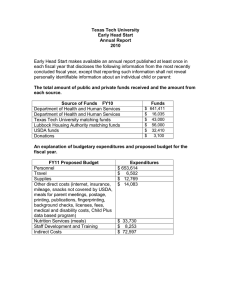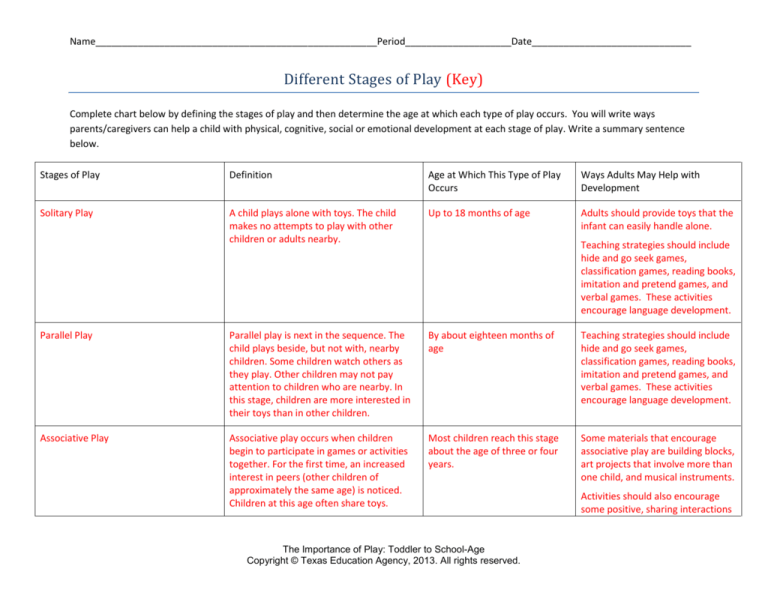
Name_____________________________________________________Period____________________Date______________________________
Different Stages of Play (Key)
Complete chart below by defining the stages of play and then determine the age at which each type of play occurs. You will write ways
parents/caregivers can help a child with physical, cognitive, social or emotional development at each stage of play. Write a summary sentence
below.
Stages of Play
Definition
Age at Which This Type of Play
Occurs
Ways Adults May Help with
Development
Solitary Play
A child plays alone with toys. The child
makes no attempts to play with other
children or adults nearby.
Up to 18 months of age
Adults should provide toys that the
infant can easily handle alone.
Parallel Play
Parallel play is next in the sequence. The
child plays beside, but not with, nearby
children. Some children watch others as
they play. Other children may not pay
attention to children who are nearby. In
this stage, children are more interested in
their toys than in other children.
By about eighteen months of
age
Teaching strategies should include
hide and go seek games,
classification games, reading books,
imitation and pretend games, and
verbal games. These activities
encourage language development.
Associative Play
Associative play occurs when children
begin to participate in games or activities
together. For the first time, an increased
interest in peers (other children of
approximately the same age) is noticed.
Children at this age often share toys.
Most children reach this stage
about the age of three or four
years.
Some materials that encourage
associative play are building blocks,
art projects that involve more than
one child, and musical instruments.
Teaching strategies should include
hide and go seek games,
classification games, reading books,
imitation and pretend games, and
verbal games. These activities
encourage language development.
The Importance of Play: Toddler to School-Age
Copyright © Texas Education Agency, 2013. All rights reserved.
Activities should also encourage
some positive, sharing interactions
Name_____________________________________________________Period____________________Date______________________________
with others.
Play with toddlers. Observe safety
and appropriateness of materials
and the play area. The objective is
that it develops flexibility and
encourages use of large motor
skills.
Make up rhymes and songs to
which toddlers can clap, dance, and
sing along. This helps toddlers
develop rhythm and balance.
Cooperative Play
This type of play is seen in the games the
younger children play, such as red rover
and tug of war. Cooperative play also is
involved when older children participate in
baseball, soccer, or other organized team
sports. In these events, children work
together to compete against another team.
Cooperative play also is encouraged by
some computer games, jacks, and yard
games.
Cooperative play is the form
most often seen in middle
childhood (ages five and up).
Some children use all forms of play by
adding one onto the others as they
develop. Other children may stop using
one form of play when the form in the next
stage develops and replaces it.
Parents can enroll their child in
cooperative sports and play games
with them.
Play is how children learn. It is the
natural way for them to explore, to
become creative, to learn to make
up and tell stories and to develop
social skills. Play also helps children
learn to solve problems. For
example, if his or her wagon tips
over, the child must figure out how
to get it upright again. When they
stack up blocks, children learn
about colors, numbers, geometry,
shapes and balance. Playing with
others helps children learn how to
negotiate.
Summary Sentence:_____________________________________________________________________________________________________
_____________________________________________________________________________________________________________________
The Importance of Play: Toddler to School-Age
Copyright © Texas Education Agency, 2013. All rights reserved.


